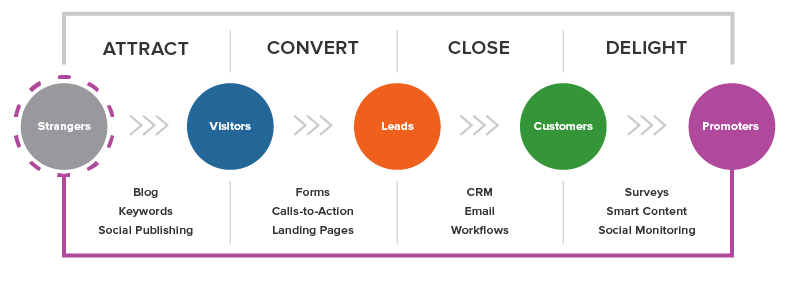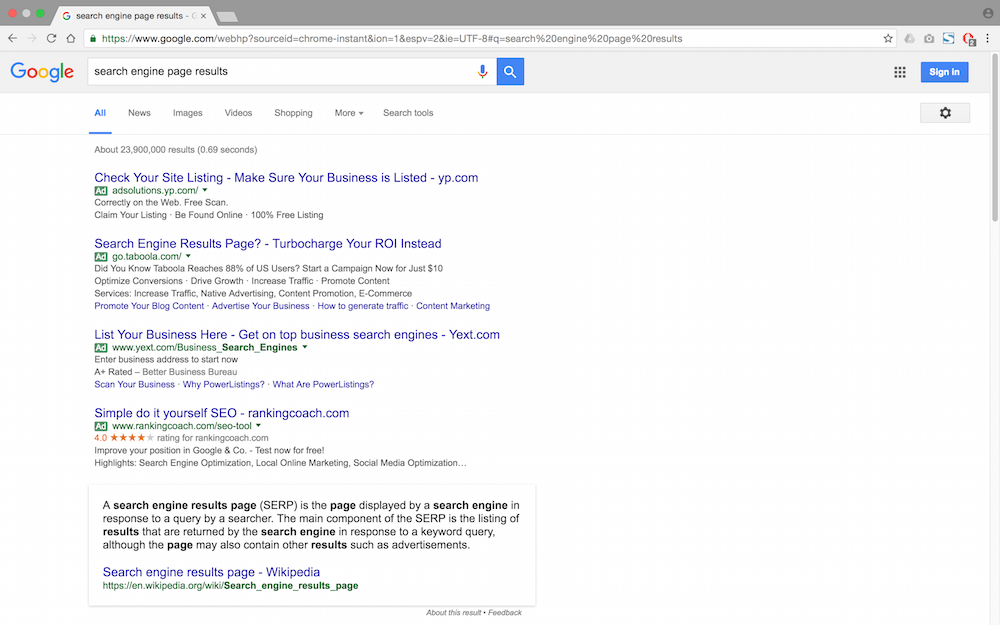
So you launched your small business. Congratulations!
Owning a business is one of the most rewarding (and challenging) things you can do. One of the most challenging parts of owning a business is bringing in more customers.
In today’s technological world, the sales process has changed and people are going online to find businesses and look for reviews.
At Tyton Media, we’ve discovered that “Having an online presence for your business can increase your sales 10x” and ”88% of consumers who search for a type of local business on a mobile device call or go to that business within 24 hours.”
The advantages of the internet are limitless. Here are the four steps needed to bring your business online.
1. Choose a domain
The first step in the process of taking your business online is to find a domain name. A domain name is the www.something.com that people use to find you in the address bar of a browser.
A domain name can be thought of like real estate. When you purchase a domain name no one else can have that domain unless they buy it from you or you fail to renew the domain annually.
The first step in finding a domain name is to head to a domain name registrar like 1&1 Domain Registration, Godaddy, Network Solutions or Namecheap. Search for your desired name to see if it’s available. When looking for a domain name, you want it to include some or all of the following factors:
-
Business name
-
Keywords related to your businesses service
-
Short and sweet
-
Easy to remember
So what if your desired domain name is taken? Well, you may be out of luck unless you are willing to buy the domain name from the current owner, but this can get quite expensive depending on the quality of the domain. In lieu of this, you can also look at other TLD suffixes like: .co, .me, .org, .net, .biz, .info, etc.
There are now currently over 1000 TLD suffixes available to the public. If you are interested in viewing all the TLDs, check out this list. Once you have found that perfect domain it’s time to purchase it.
But how much do domains cost?
Domains are usually pretty cheap if someone doesn’t already own the domain. They usually range from $10-$15 a year depending on the TLD and the registrar.
If you are buying a domain name from someone who already owns it, you can expect to pay anywhere between $1 and $36,000,000. That’s right; the most expensive domain name ever sold was Insurance.com for $35.6 million! But don’t worry too much about your domain name. It’s the value of the website you create that matters!
2. Start web design and development
So you’ve purchased that perfect domain name and now you are ready to build your website and start doing business online. It’s important to have your website goals laid out before you start building it. There are some important questions to ask:
-
Will your website accept payments?
-
Will you be selling products and services on your website?
-
How many pages will your website be?
-
Do you need custom website development?
These questions will help figure out how much it will cost to build a website. It will also help the web development/design company to build a well-structured website. Here are the 3 main types of websites:
-
E-commerce websites
If you want to sell products on your website, then you need an e-commerce website. E-commerce websites allow customers to purchase products securely right on your website. They can be custom made or you can use website builders and e-commerce software to facilitate your online store.
Some popular website builder platforms include Shopify, BigCommerce and Magento; while some platforms offer free trials and variable pricing. If you are a small business, I recommend using one of these platforms instead of creating a custom e-commerce solution. It will save you a ton of money and shorten your learning curve in the long run!
-
Business websites
Companies that provide offline services should have a business website. Business websites give your company an online presence so customers can find your contact information, details of your services, and information on how to get your services. They often have a booking or consultation form so that potential customers can get in touch to learn more about your businesses services or book an appointment.
Business Websites are great for: doctors, chiropractors, lawyers, dentists, real estate agents, construction companies, psychologists, etc. These types of businesses can gain 10x customers just by being online. Business websites typically run on a CMS (content management system) like WordPress or Joomla. A CMS will help your business scale and grow online by allowing for better search engine rankings and user engagement.
-
Custom websites
Lastly, custom websites are for any type of website that needs custom development. This could be an online web application or even the next Facebook! Custom websites are often the most expensive because they require quality developers and time. Depending on how complex the custom website is, the cost could reach $20,000-$50,000 or more. This option is not usually for small businesses unless it’s a tech startup whose main business is done online.
3. Select a web hosting package
Now that your brand new website is complete and ready to go live, it’s time to find somewhere to host it. In order to have your business online, you must host it on a server. There are tons of website hosting companies that provide high quality hosting at an affordable price. A few things to look for in a hosting provider include: support, uptime guarantee, scalability, parking, price, control panel and automatic backups.
It is possible to find a hosting provider for as little as a few bucks a month, but you get what you pay for. Many cheap shared hosting companies will throw you on a server with thousands of other people which limits resources making your website slow.
If your website is going to get a good amount of traffic, you should be on a VPS or Dedicated server. A dedicated server is best for companies that want to lease an entire server and not share it with anyone else. A VPS (virtual private server) mimics a dedicated server within a shared hosting environment. The great thing about most hosting providers is that they have multiple packages so you can scale your website with the same company.
4. Grow your business
So your new websites is online and live… but customers aren’t flocking to it. What the heck?! That’s because there are millions of competitors online, doing the same thing. In order to get customers to your website, you have to do some online marketing. Here are some ways to get visitors to your website:
Inbound Marketing
This is newest and highest converting way to get visitors and turn them into customers. Inbound marketing is the promotion of your website/business using:
-
Whitepapers
-
Newsletters
Below is a graphic by hubspot that explains inbound marketing methodology very well. Inbound marketing focuses on creating quality content that attracts ideal clients to your company or product via search engines and social media.

Advertising
Advertising can help increase visitors to your website. But be careful, it’s very easy to spend hundreds and thousands of dollars and not land a single customer if you go about it the wrong way. Online advertising is a very precise science of finding the right target audience, creating the right ad, and creating high converting landing pages.
Some examples of online advertising include Google Adwords and Facebook Ads. Google Adwords allows you to target certain keywords people are searching for in Google. Here is an example of some Google Adwords ads in the SERP (search engine results page).

This allows you to get really nitty gritty with keywords to find that perfect custom searching for your business.
Facebook Ads uses a different approach than Google Adwords. Since Facebook knows pretty much everything about you, they can use this information to help businesses reach very specific target markets on Facebook.
Unlike Google Adwords, Facebook Ads use interests and demographics to target users. The great thing about Facebook Ads is that you can get really precise with your targeting. For example, you could target Men between the ages of 25-35 that own a small business with 1-10 employees. This type of targeting can really help you find your ideal customers and convert them easier.
Facebook ads are also a cheaper than Google Adwords. According to AdEspresso, the average CPC (cost per click) of Facebook Ads is $0.27 cents while the average CPC of Google Adwords ads is $1.50.
Wrapping Up
Now that you know the four simple steps to take your business online, you should be ready to take the journey to grow your business.
First, you must find and purchase a domain name that fits your business or service. Once your domain is purchased, get a website built or created and find a website hosting company in order to push it live. Lastly, grow your website in order to get traffic and customers. If you follow these simple steps, you will get your online business up and running in record time.
This article has been edited.
Tyler Horvath is the founder and CEO of Tyton Media. He has over 12 years experience in Web Design, SEO, Digital Marketing and Entrepreneurship. Connect with @tyton_media on Twitter.
© YFS Magazine. All Rights Reserved. Copying prohibited. All material is protected by U.S. and international copyright laws. Unauthorized reproduction or distribution of this material is prohibited. Sharing of this material under Attribution-NonCommercial-NoDerivatives 4.0 International terms, listed here, is permitted.













